Specifically, telecommunications and data center networks rely on Single-Mode Fiber (SMF) and Multimode Fiber (MMF) SFP transceivers that have contrasting functions since they serve different network requirements and distances. Single-Mode SFP transceivers are designed for long-distance communication, capable of transmitting data over distances of up to 120 kilometers without significant loss of signal quality. They have a narrower core (approximately 9 micrometers in diameter), which ensures light can travel directly through the fiber by minimizing signal attenuation and dispersion.
Conversely, Multimode SFP transceivers belong to the class of short-reach devices typically deployed within a building or campus. MMF transceivers support data transmission over distances ranging from 100 meters to 2 kilometers, depending on the data rate and fiber type. They have a wider core (around 50 to 62.5 micrometers), which enables multiple modes or light paths to coexist within the fiber, thus resulting in modal dispersion at shorter distances but reducing its efficacy over longer stretches.
The choice between Single-Mode Fiber (SMF) and Multimode Fiber (MMF) SFP transceivers is made based on specific network requirements such as desired rates of data transfer, transmission ranges, and financial implications.
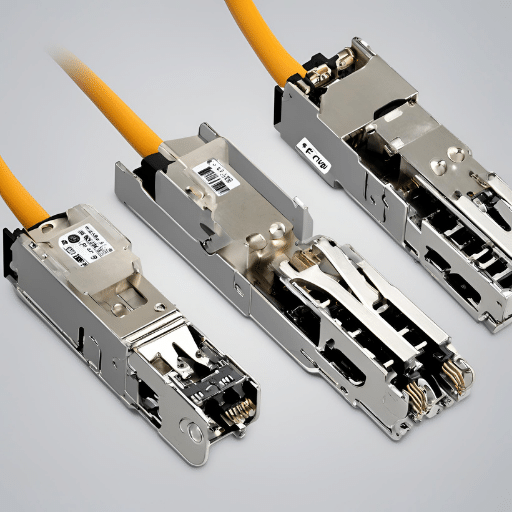
The Multimode SFP module, an optical transceiver that enables high-speed data transfer over short distances (100m to 2 km), is designed for multimode fiber optic cables, as these have larger core diameters (typically 50 or 62.5 µm) than single-mode fibers. Larger core sizes of these multimode SFPs allow them to emit multiple light paths or modes at the same time, thereby leading to more bandwidth within shorter distances but also giving rise to modal dispersion, which puts a cap on the length of transmission. This can be seen in applications such as intra-building and campus networks where there are demands for high-speed data rate transmissions over moderate distances.
Comparing Multimode and Single-Mode SFP Modules
The fundamental distinction between multimode and single-mode SFP modules lies in their core size and how they manage light transmission; this affects their range and use conditions. The large cores in multimode SFP modules enable several light paths, which results in faster data transfers over short distances. These work well when used in buildings or across campuses with relatively small distance transmitted. Conversely, single mode has very small cores, allowing the passage of one mode or path only. This mode restricts bandwidth compared to multimodes but it significantly reduces modal dispersion thus allowing these modules to send data across long distances often exceeding10km. Such modules make single -mode sfp suitable for telecommunication over long distance or data communication networks that require high precision as well as extended coverage.
It therefore follows that selection based on either one of these types should take into consideration the network’s specific requirements especially regarding costs, transmission distance and speed.
Multimode sfp uses not only different core sizes but also works at specific wavelengths and effective maximum distances. Most commonly, these modules operate at 850nm wavelength that is optimized for short-distance data transmission. The standard length of multimode sfp can be anything from 550 to 2000 m depending on the rate of connection, which might be either 1 or 10 Gbps, making them highly suitable for intra-building or campus-wide network deployments. In choosing multimode sfp modules, network designers and engineers need to take these characteristics into account so as to ensure compatibility with their existing network infrastructure and meet the performance demands of the application in question.
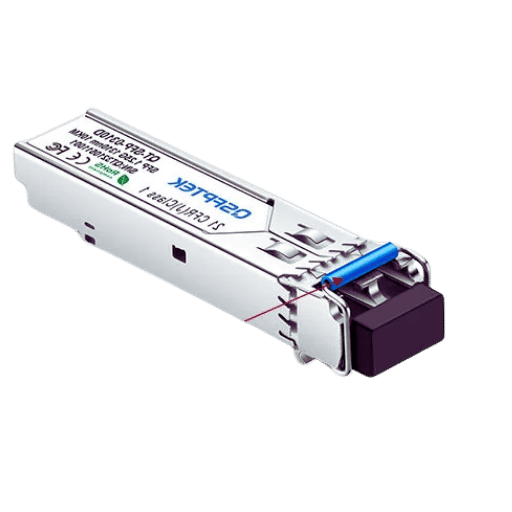
Ensuring Compatibility across Different Networking Devices
It is important to do extensive compatibility checking before incorporating multimode SFP modules into a network that consists of Cisco, Mikrotik as well as Supermicro equipment. These manufacturers employ proprietary codes in their devices; thus, it is mandatory to select compatible SFPs programmed for specific equipment identification. For example, in order to ensure that the SFP modules are either certified by Cisco or are compatible with its unique Internetwork Operating System (IOS), one has to take note while selecting them. Similarly, there exist Mikrotik devices that require SwOS or RouterOS compatible SFP modules according to the type of device. With regard to Supermicro which is known for its server and storage systems, it is essential that the bandwidth and distance specifications of their switches and network interface cards align with the chosen SFP modules they are working on. Reputable SFP vendors normally offer complete datasheets as well as compatibility matrices, which can come in handy when choosing modules suitable for each brand, ensuring good performance and reliability, especially when there is a need for network engineers.
Multimode SFP modules’ duplex LC connectors serve as primary interfaces through which fiber optic cables can be attached together. Such connectors allow data transmission in both ways at once, which is necessary for full-duplex communication over multimode fiber optic cables. Their tiny size facilitates high-density connections among networking hardware, thereby making them most relevant where space is limited in some areas, such as data centers of companies involved in cloud computing or streaming services. The latching mechanism used by this kind of connector ensures strong connectivity and, hence, stable signaling within a given network system even upon being subjected to damage or vibration. This article highlights the use of Duplex LC connectors on multimode SFP modules as a way of enhancing data throughput while also minimizing signal losses leading to improved network performance.
Understanding capacities such as 1G and 10G in SFP modules is very important for planning and optimizing networks. The “G” in 1G or 10G stands for gigabit per second, which refers to a unit of measuring the amount of data transferred in a given time. A speed of one gigabit per second can be supported by a single Gbps SFP module that is typically used by small-medium enterprise networks. On the other hand, bandwidths up to ten gigabits per second are supported by the 10 Gbps SFP+ modules often required by high-speed networks with large data needs, including data centers or huge corporate facilities. In view of this, the industry has shifted towards developing even faster transmission rates ranging from25G, 40Gb up-to-100GB modules so as to address the needs of businesses that heavily rely on streaming services, cloud computing and virtualization. There are some requirements that must be met before any increase in capacity is possible, like considering infrastructure, compatibility, or throughput limits for efficient communication with reduced loss and delays during information transfer in different network segments.

This guide has been designed to provide professionals with guidance on proper and safe installation of multimode SFP modules in order to maintain network performance at optimal levels and prolong the service life of the device.
To guarantee a long life and maintain the reliability of multimode SFP modules, perform the following acts:
Thus, it can be seen from these maintenance tips that your multimode SFP modules will operate efficiently if handled correctly thus enhancing network integrity and performance.
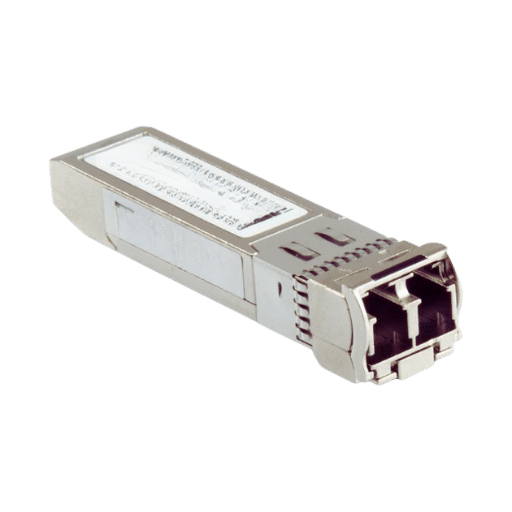
Multimode SFP (Small Form-factor Pluggable) and single-mode SFP are different from one another primarily because of the optical range they cover and their application uses. For instance, Multimode SFPs are designed for short-range data transmission, usually up to 550 meters for 1G Ethernet or 300 meters in case of 10G Ethernet, so that they can be used as a link within a building or across campuses. These have larger diameter fibers (typically 50 or 62.5 micrometers), which allow greater amounts of data to traverse shorter distances. However, Single-Mode SFP modules are optimized for long-distance transmission ranging beyond 10 kilometers, suitable for carrier networks and telecommunication purposes. Such modules apply the use of their narrow fiber optic diameter (usually 9 micrometers) in such a way that just one light mode is directed straight down the fiber with consequent huge reductions in signal loss thereby extending the wavelength at which information multiplexing takes place.
When you are choosing between multimode and single-mode sfp module options for gigabit ethernet applications, there are two main considerations: budget on hand as well as how far the signal needs to go. Thus, it is the most cost-effective to use multimode sfp on deployments where the distance does not exceed 550m, like within buildings or across campuses. Due to the high-speed data over short distances, it can handle, mainly most company enterprises would prefer using them compared to other forms of network connections that might be chosen instead by those seeking optimal solutions for their business processes within data centers. Hence, when dealing with longer lengths than what multimode fiber can provide, especially when exceeding ten kilometers then, one cannot do without single-mode sfp. This allows them to tunnel the light through much longer distances because its fiber core is narrower, and hence, data loss as well as bandwidth limitation are minimized over a far-flung range. Despite having a higher original price, single-mode modules are necessary for telecommunications or wide networks where distance is a significant factor. Hence, whether Gigabit Ethernet requires Multimode or Single-Mode SFPs is dependent on aligning what network needs are with the specific capabilities and cost implications of every module type.
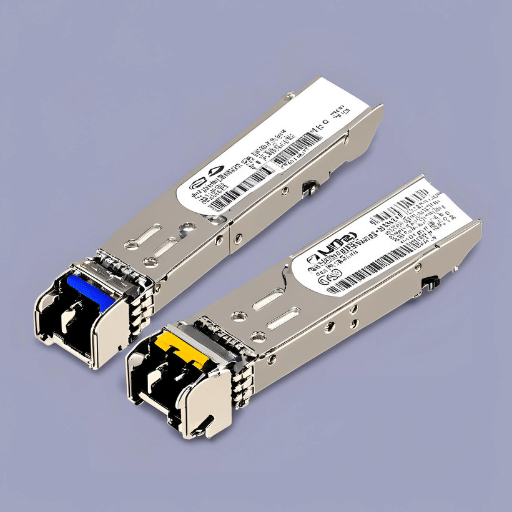
High performance of Multimode SFP modules necessitates careful handling and maintenance of fiber optic cables. The following best practices are essential:
These rules will prevent damage from occurring while simultaneously sustaining rapid transmission of data associated with Multimode SFP modules
Interoperability between networking devices from different vendors necessitates adherence to MSA (Multi-Source Agreement) standards for SFP (Small Form-factor Pluggable) modules. In brief, MSA standards define the physical, electrical attributes, and thermal conditions of SFP modules, which enable them to be seamlessly integrated into a heterogeneous network. By conforming to these specifications, network administrators can combine elements from different suppliers giving flexibility and scalability in network design and expansion. Moreover, this shows that such models meet the recommended performance levels, reducing operational problems and repair expenses that result from failures.
Your corporate should upgrade its network infrastructure with 10G Multimode SFP module as a sound strategy to deal with increasing demand for data transmission by modern organizations. These high-speed units bring about notable benefits such as enlarged bandwidth, better data integrity, and low delays, hence proper functioning of the entire system across the campus. Used with 10G SFPs, multimode fibers support transmissions at shorter distances yet are cost-effective for campus networks, data centers, and internal wiring closets where high-speed data transfer is important. Before implementing an upgrade, it is necessary to check whether they would fit into an existing infrastructure and also meet MSA regulations to guarantee smooth integration. This action ensures that whenever new technologies emerge, your company will be well placed to take advantage of this while at the same time operating efficiently, which is a good investment in companies wishing to remain competitive within today’s digital business environment.

It is seldom advisable to use Multimode SFP (Small Form-factor Pluggable) modules with single-mode fiber optic cables. This is because of the differences in core size and light propagation properties between multimode and single-mode fibers. The larger core size of multimode fibers allows multiple light modes to propagate at the same time, while single-mode fibers have a very small core that permits only one mode of light to propagate. Basically, there will be signal loss and degradation in performance if a multimode SFP is forced into a single-mode fiber. In instances where it becomes imperative for these different types of fiber equipment to be interconnected or used simultaneously, special transceivers designed for this purpose must always be utilized so as to ensure maximum performance and avoid connectivity problems.
Identifying compatibility issues related to Multimode SFPs requires several considerations. First, compare the wavelength specifications on the connected equipment and that found on the employed fiber optic cabling against those stated for the sfp module. At present, most multimode sfps are intended for short-distance communications carried out at 850nm which should match your network requirements. Second, ensure that both transmitting and receiving equipment can support data rates at which sfp operates to avoid creating traffic jams.In addition, you must verify that its form factor matches with the intended devices as well as other things like the type of connector (such as LC or SC). Finally, some vendors may require specific coding before their SFPS will function correctly with network devices since they might have implemented proprietary checks for component compatibility.A proper examination of these points will help identify any possible compatibility issues which can affect the correct functioning of a network.
Yes, distance greatly affects the performance of Multimode SFP (Small Form-factor Pluggable) modules. Multimode fiber is optimized for high bandwidth over short distances making it ideal for data communications within a small area such as a campus or within a data center. The core diameter of multimode fiber is larger than that of single-mode fiber, thus allowing multiple modes or paths of light to propagate in the fiber. However, this also causes modal dispersion, which is signal degradation over long distances. The quality of signal transmitted by an MMF-SFP module deteriorates with increasing distance, leading to lower transmission speed and low network performance generally. Therefore, the selection of the appropriate type of fiber and sfp module should be based on the required transmission distance in order to ensure the effective functioning of networks.
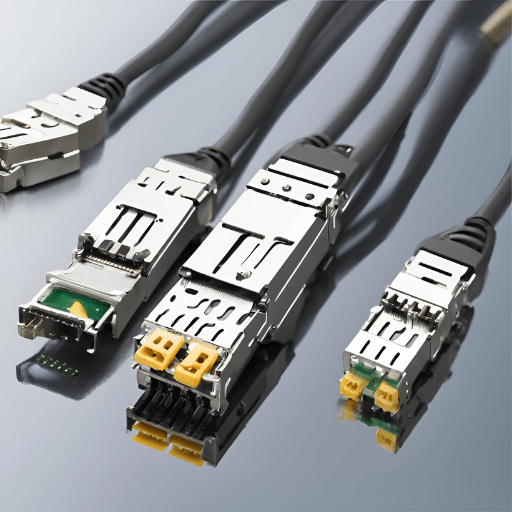
FiberOptic.com is an online resource that has explained thoroughly on SFP multimode transceivers and the way they assist in quick transmission of data in networking. The article breaks down into various parts – technical specifications, compatibility issues and possible applications for SFP multimode transceivers to give its audience a thorough overview of this important component of a network.
This academic journal article published in the IEEE Communications Magazine, presents a performance comparison analysis of SFP multimode fiber links within data centers. Signal integrity, bandwidth efficiency, and latency characteristics for SFP multimode setups are some of the factors investigated by this study. To optimize data center network performance, it offers some valuable insights to network engineers and IT professionals.
Cisco Networking Academy: Deploying SFP Multimode Modules for Campus Network Connectivity
The Cisco Networking Academy is a practical resource on how to deploy SFP multimode modules for campus network connectivity in educational settings. The installation procedures, troubleshooting tips and best practices for integrating SFP multimode modules into campus network infrastructures are covered by the resource. With an emphasis on practical applications, this is an important source for network administrators who want to make the most use of SFP multimode technology.
A: To realize long range communication, Single Mode SFP Transceivers utilize one light mode for data transmission over distances of about 100 km . They usually work with wavelengths of either 1310 nm or 1550 nm. On the other hand, Multimode SFP uses several light modes for data transfer which makes them suitable for short distances like up to 550 m and operate at an 850nm wavelength. Customers often use multimodal links within the same building or area.
A: One should not mix single-mode and multi-mode transceivers and fibers; each type has specific optical characteristics that cannot be replaced by the other type. Poor performance or complete link failure may result if they are used interchangeably. In the case of gigabit sfp ports, you have to use the right kind of optic (single mode or multimode) according to your equipment’s design specifications.
A: Different types of multimode fiber used in MM LC Modules offer support over various distances. For example, om1 fiber is good up to 300m while om3 and om4 fibers give speeds up to 550m and 1000m respectively. For GigE , OM3 could go upto 300 meters while OM4 could go upto 400 meters before needing to switch out fiber optic cables.
A: Technically possible, though not recommended, one can connect a multi-mode fiber patch cord to a single-mode SFP LC module. The core sizes and light propagation characteristics of the two fiber types are significantly different. This disparity can cause major signal loss leading to lower performance of the network link.
A: Due to their design, SFP transceivers can be plugged in or removed while systems or network devices are still on. In fact, this is very important for the maintenance, upgrades, and also scalability of networks, as users can add or replace transceivers without interrupting network operations so much.
A: “Mini GBIC” refers to an older generation of GBIC modules, which were larger in size compared to the newer small form-factor pluggable (SFP) modules. In essence, SFP (Small Form-factor Pluggable) transceivers are an updated version and smaller than mini GBICs but offer similar functionality and performance levels. Its small size provides for higher port density, which is advantageous over mini GBCs.
A; Multi-Mode SFP Transceiver should not be used with Single-Mode Fiber Patch Cord when distances exceed 2 km. Multi-mode transceivers are optimized for shorter distances by having wider core diameters that allow multiple light modes through them, whereas long-distance applications past 2km will demand the use of single-mode sfp transceivers and single-mode fibers because they sustain integrity up to longer ranges.
A: It is necessary to ensure that the transceiver is compliant with Cisco’s standards and requirements even though many multi-mode SFP transceivers are compatible with Cisco switches. This is because, most often than not, Cisco will require that you use transceivers that support specific protocols and coding in order to work with their devices. Use an explicitly stated fiber transceiver for Cisco or a third-party transceiver that is guaranteed to work on Cisco equipment.